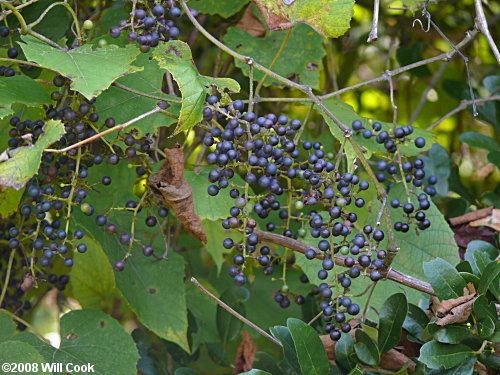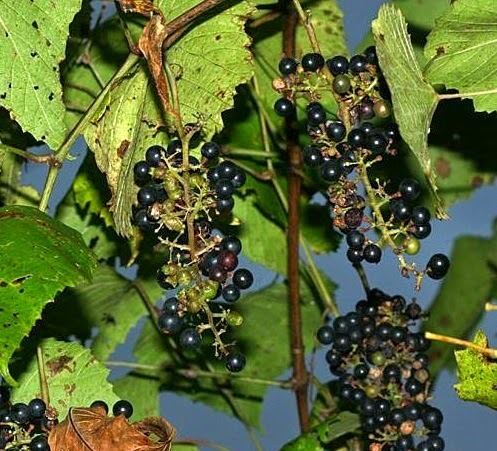Family Vitaceae Rank Species | Order Vitales Higher classification Grapevines | |
 | ||
Similar Grapevines, Vitis aestivalis, Vitis cinerea, Vitis palmata, Vitis monticola | ||
Vitis vulpina (with common names frost grape, winter grape, fox grape, and wild grape.) is a North American species of herbaceous perennial vines in the grape family. It is widespread across most of the eastern and central United States as well as the Canadian Province of Ontario.
Contents
The genus name Vitis comes from the Latin word for "vine" and the species name vulpina comes from the Latin word for "fox-like" or belonging to a fox. It is believed that foxes were attracted to this type of grapevine and Linnaeus, used the term vulpina to differentiate these smaller wild grapes from the other American known grapes. The more common name, frost grape, refers to the fact that this otherwise acidic/tart-tasting grape becomes more desirable and sweet once it is exposed to a frost. Vitis vulpina is a high-climbing woody vine with a thick trunk and red tendrils. The grapes and the vine itself have many uses ranging from herbal remedies to edible delicacies.
Description

Vitis vulpina has a relatively long lifespan with a moderate growth rate. Typically the vine will reach a maximum height of about 83 feet. Contrary to the name "Frost Grape," the plant does not do well in cold temperatures below -23 degrees F. The only benefit of the frost on the grape is further ripening of these grapes between the months of September and October. The berry (grape) is round and very tart/acidic, becoming sweet after a frost due to a drop in acid levels as the grape decomposes. Along with the ripening of the grapes in colder months, the leaves eventually fall off as the plant enters the dormant stage. Grapes tend to shrivel up on the vine, turning into raisins if not harvested before meteorological winter. The shriveled grapes are advantageous for animals looking for food during these months.

The grape vine can be either monoecious or diecious, with flowers appearing in May to June. The flowers are arranged in compound panicles with 5 yellow petals, 5 sepals and 5 stamen (floral number is 5). The leaves are arranged alternately with a cordate shape. Venation is palmate. Unlike other wild grapes there are no tufts of hair present on the leaves. Tendrils appear every third leaf oppositely are reddish in color and used for growth along surfaces. The grapes are tiny and dark purple.
Habitat

It is most commonly found in moist or dry soils in woods, flood plains, and ravines. Due to its known ability to climb, the vine is often used along fences and trellisses for ornamentation.
Uses
Commonly used for wine making. The sweet taste from the high sugar levels and drop in acidity after a frost allow for wine fermentation or preserves. The grapes are wanted when sugar is at its maximum but before the grapes lose their color and tannin components. Many parts of the plant are used in herbal medicines. The leaves of the plant are used sometimes for liver treatments because they are considered hepatic. When the leaves are wilted, they are used as a poultice to relieve tenderness of the breasts after childbirth. The bark can be infused to treat urinary problems.
